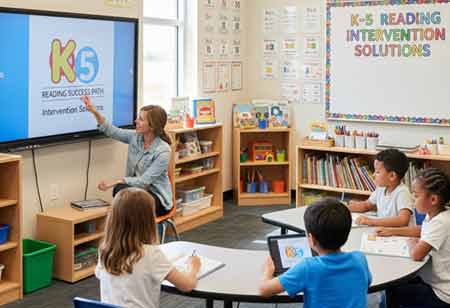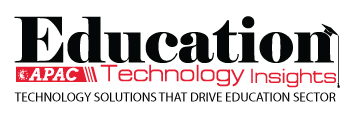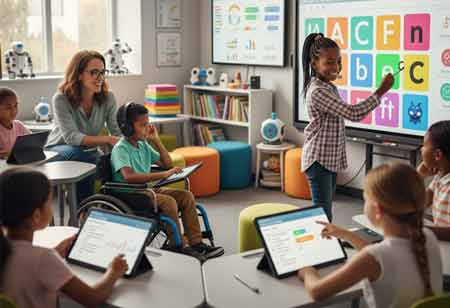THANK YOU FOR SUBSCRIBING
Be first to read the latest tech news, Industry Leader's Insights, and CIO interviews of medium and large enterprises exclusively from Education Technology Insights
K–5 Reading Intervention as Core Educational Infrastructure
The K–5 reading intervention market is rapidly transforming through technology and the Science of Reading, with a focus on personalized, engaging solutions to address literacy gaps effectively.

By
Education Technology Insights | Tuesday, November 11, 2025
Stay ahead of the industry with exclusive feature stories on the top companies, expert insights and the latest news delivered straight to your inbox. Subscribe today.
The global K–5 reading intervention market is undergoing a significant shift as long-standing, resource-intensive and inconsistent print- and tutoring-based approaches prove impossible to scale. Today, this segment is undergoing a rapid and fundamental metamorphosis, driven by a powerful convergence of cognitive science, advanced technology, and a post-pandemic sense of urgency. The K–5 window is understood as the critical period during which intervention is not just practical but essential for a child's academic and life trajectory.
Market Foundation: Valuation and a Double-Digit Horizon
The K–5 reading intervention market is a high-growth pillar of the global educational software industry. The USD 1.92 billion Reading Intervention Software market reflects a significant shift from static, one-size-fits-all print curricula to digital-first learning solutions. A confluence of powerful financial drivers propels this valuation. In the public sector, governments worldwide have allocated historic levels of funding to combat the well-documented learning loss stemming from pandemic-era disruptions, with literacy recovery being the top priority. This has unlocked billions in institutional spending. Concurrently, the private sector has seen a surge of venture capital interest, as investors recognize the market's scalability and recurring revenue potential. A highly informed parent and guardian consumer market is increasingly seeking supplemental at-home tools to ensure their children's success, creating a robust B2C stream alongside the traditional B2B district sales model.
The market's future trajectory projects a vigorous Compound Annual Growth Rate (CAGR) of approximately 10.3 percent over the next decade. This is a double-digit growth path that is set to propel the market's value to well over USD 5 billion by the early 2030s. This growth is not speculative; it is anchored in a long-term, systemic need to close persistent literacy gaps that were merely exacerbated, not created, by the pandemic.
How the 'Science of Reading' Reshaped the Market
The single most powerful force shaping the content and structure of modern intervention solutions is the pedagogical movement known as the "Science of Reading". This is not a new program or a fad, but a comprehensive body of research, accumulated over decades from cognitive science, linguistics, and neuroscience, that details precisely how the human brain learns to read. This research has reached a clear consensus: the brain is not "wired" for reading, and skills must be taught explicitly and systematically.
This movement has triggered a market-wide realignment. For years, the industry was fragmented, with many solutions based on a "balanced literacy" approach that de-emphasized explicit phonics. The Science of Reading movement mandates that effective intervention must be built on a foundation of structured, sequential instruction in phonemic awareness (hearing and manipulating sounds) and phonics (connecting sounds to letters).
As a result, a "Science of Reading-aligned" certification has become the most crucial feature for any product seeking adoption. This has forced providers to re-engineer their products, moving away from guesswork and picture cues toward evidence-based, skills-focused curricula. This pedagogical shift is also directly responsible for the rise of data-driven instruction as a core platform feature. A Science of Reading -based approach requires progress monitoring. Educators no longer just want a digital library; they demand granular, real-time dashboards that can pinpoint a child's exact skill deficit. They need to know if a student is struggling with CVC words, specific vowel digraphs, or fluency at the phrase level. The new generation of tools provides this data, transforming the teacher's role from a guesser to a data-informed clinical practitioner.
The Technological Engine: AI, Personalization, and Immersive Learning
If the Science of Reading is the "what," technology is the "how." The K–5 intervention market is being defined by a technological arms race to deliver this rigorous instruction in the most effective, scalable, and engaging way possible. The cornerstone of this effort is adaptive, personalized learning. The one-size-fits-all digital workbook is obsolete. Modern platforms function as personal tutors, using sophisticated algorithms to diagnose a child's abilities from the moment they log in. This technology ensures a student is always working within their "zone of proximal development"—the crucial learning sweet spot where tasks are challenging but not overwhelming. If a child masters a skill, the system advances; if they struggle, it provides remediation before frustration sets in.
Building on this adaptive foundation is the integration of AI, which is moving solutions from being merely responsive to being prescriptive and predictive. Advanced AI-powered speech recognition is a prime example. These tools can now "listen" to a child read aloud, analyzing their fluency, accuracy, and even phoneme-level pronunciation in real-time. It can provide immediate, corrective feedback—"I heard you say /f/, but this letter says /v/"—at a scale no human teacher could manage. Beyond correction, AI engines can predict which students are at high risk of falling behind and generate limitless new reading passages tailored to a child's exact reading level and personal interests, solving the long-standing problem of content becoming stale.
For the K–5 audience, none of this works if the child refuses to use the product. Gamification and immersive engagement are the delivery mechanisms for rigorous instruction. Solution providers are investing heavily in narrative design, compelling worlds, and motivating reward systems. By embedding Science of Reading -aligned phonics drills within a game where a child is unlocking a new world or earning gems to customize an avatar, these platforms secure the "high-dosage" practice necessary for intervention to succeed. This design philosophy turns what could be a frustrating chore for a struggling reader into a self-motivated, joyful, and confidence-building experience.
The K–5 reading intervention market has evolved from a disparate collection of digital workbooks into a sophisticated, science-driven, and technologically advanced industry. The market's robust valuation and high-octane growth trajectory are built on a solid foundation: an urgent, recognized need and a new consensus on what works. As these tools become more powerful and accessible, the industry is moving closer to its ultimate, ambitious goal: not just to manage literacy gaps, but to solve them entirely for an entire generation.







